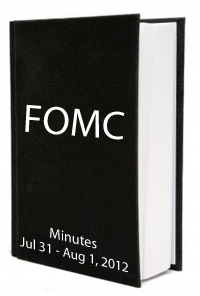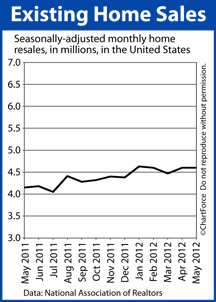 Mortgage markets improved last week. Mixed data highlighted the U.S. economy’s slow, steady expansion; the Federal Reserve changed market expectations for the new stimulus; and, sovereign debt concerns moved back to the forefront in Europe.
Mortgage markets improved last week. Mixed data highlighted the U.S. economy’s slow, steady expansion; the Federal Reserve changed market expectations for the new stimulus; and, sovereign debt concerns moved back to the forefront in Europe.
Conforming mortgage rates fell last week for the first time this month, breaking a 4-week losing streak that had stymied would-be refinancing households in OH and nationwide.
Mortgage rates had been higher since the start of August.
In published minutes from its July 31-August 1, 2012 Federal Open Market Committee meeting, the Federal Reserve revealed that, absent “substantial and sustainable” economic growth, many of its members believe further monetary easing would be warranted.
Recent data shows that growth may be sustainable, but it’s hardly substantial.
- Job growth is higher in 22 straight months, but averaging less than 100,000 net new jobs per month over the past three months
- Housing data shows a steady home sales growth, but a dwindling home inventory of new homes and home resales
- GDP grew 1.5% in Q2 2012, down from 2 percent during the first three months of the year
Should the Fed add new stimulus, it would likely come in the form of a third round of quantitative easing, a program by which the Federal Reserve purchases government-backed bonds on the open market, including mortgage-backed bonds.
The new-found demand for bonds helps raise their respective prices which, in turn, moves down their respective yields.
“QE3” would push mortgage rates lower, likely. It’s not expected to be released (if at all) until the FOMC’s next scheduled meeting, September 12-13, 2012. There is a small chance it’s announced this Friday, however; the Federal Reserve is meeting in Jackson Hole, Wyoming for its annual retreat.
For this week’s rate shoppers, this week is filled with data and rhetoric. New U.S. housing data will be released along with recent inflation statistics. Both have the ability to cause mortgage rates to rise. In addition, second quarter GDP figures will be revisited and revised. If they’re revised lower, Fed-led stimulus may be more likely.
Lastly, Eurozone leaders reconvene to discuss the terms of Greece’s bailout. If terms are changed for the worse for Greece, mortgage rates may drop in a bout of safe-haven buying.
 Eariler this week, the Federal Reserve
Eariler this week, the Federal Reserve  Home resales
Home resales 